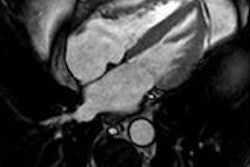
There is an acute shortage of radiotherapy equipment of any type in Africa, and the scarcity of resources is becoming even more severe and pronounced with the increase in cancer incidence in the continent, according to an International Atomic Energy Agency (IAEA) report published in Lancet Oncology.
Some 700 radiation therapy machines are needed at a minimum, a survey conducted through IAEA's Directory of Radiotherapy Centers (DIRAC) has found. DIRAC is a centralized international registry estimated to include data from 90% of the world's healthcare facilities that provide cancer treatment. It discovered that an estimated 198 million people live in one of 29 countries that do not have any radiotherapy treatment facilities whatsoever.
The last time a comprehensive survey of radiation oncology resources in African nations was conducted was in 1998. IAEA conducted the assessment as part of an evaluation to determine the effects of programs designed to enhance radiation services in various regions of Africa.
The updated survey (Lancet Oncol., April 2013, Vol. 14:4 pp. e168-e175) analyzed 2010 data, according to lead author Dr. May Abdel-Wahab, professor of radiation oncology at Cleveland Clinic Lerner College of Medicine Case Western Reserve University. She studied a total of 52 African nations and identified a total of 277 radiotherapy machines, compared with 155 in 1998. However, this increase was concentrated in a handful of countries, specifically South Africa, Egypt, Morocco, Algeria, and Tunisia.
On average, for every 1 million people living in Africa, there was fewer than one treatment system available in 2010. By point of comparison, Western European countries have 6.12 treatment systems for every 1 million residents.
Cobalt-60 teletherapy units, a precursor to linear accelerators, represented 32% of the total treatment systems. The report noted there are a greater number of external-beam radiotherapy machines in use since 1998, but only 23 countries had these systems. Brachytherapy treatment was only offered in 20 countries.
About half of the existing radiotherapy centers are equipped with only one radiotherapy machine. They offer curative and palliative treatments based on 2D imaging and treatment planning. The most advanced centers are equipped with five or more radiotherapy machines, advanced imaging modalities, and sophisticated treatment planning systems. These, however, represent only 2% of the total.
In summary, access to radiotherapy treatment is very limited for the majority of individuals living in Africa. The region's healthcare infrastructure is exacerbated by lack of adequate financial and professional staff resources, lack of enough diagnostic facilities, such as radiology departments, and the cost of treatment to patients. As a result, cancer patients are often diagnosed only when their disease is advanced.
While some progress has been made, the progress is being offset by the fact the number of new cases of cancer in low-and middle-income countries is predicted to increase from 1.0 to 1.5 cases per 1,000 people between 1990 and 2020. Populations are aging and tobacco use among Africans is taking its toll.



















